The Southern Paiute
Module 12
Introduction
The Southern Paiute were nomadic hunter and gatherers whose traditional territory spanned southern Utah, southern Nevada, and western California. This area was once home to sixteen Southern Paiute bands. Those bands located in the northeasternmost portion of this territory were in frequent contact with Plains Indian groups and adopted many of their practices and beliefs, whereas those located in the southwesternmost area adopted many of the characteristics of the River Yuman cultures. (As discussed in Module 8, one of these bands—the Chemehuevi—relocated into River Yuman territory in historic times). The Southern Paiute speak Southern Numic, a branch of the Uto-Aztecan language. This language is closely related to that spoken by the northern Great Basin tribes (such as the Shoshone) and the Ute Plains Indians. The Southern Paiute's name for themselves in Nuwuvi, which means "the People." The map (below) shows the Southern Paiute past territories and modern reservations.
Instructions: Using the slide button on the lower right hand corner, toggle between Southern Paiute Past Territories and Southern Paiute Modern Reservations pages. You can also click on the tabs on the top of the map to learn more. The selected page is highlighted in blue.
Required Reading
• Griffin-Pierce Chapter 9
• Video on the Mountain Meadows Massacre
If you are having trouble viewing the video, click on this link - http://www.youtube.com/watch?v=U8kcqpTkj6k
Major Concepts and Terms
• Nuwuvi
• Coyote
• Burden baskets
• Seed beaters
• Puha
• Water babies
• Round Dance
• Ghost Dance
• Wovoka
• Cry Ceremony
• Bear Dance
• Mountain Meadows Massacre
• Lamanite
• termination
Click on next page to continue.
Paiute Origin Story
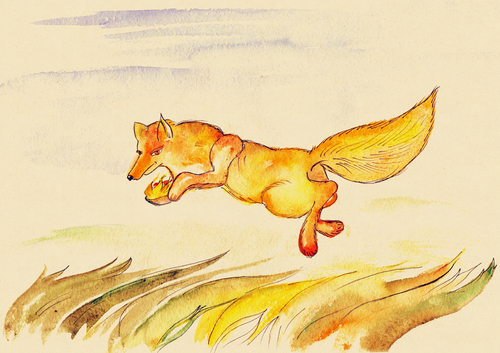 The Paiute origin story features Coyote, a common trickster character in Native American legends. Coyote takes many roles in these stories, but is typically an impulsive and boastful character that often causes things to go awry. His role in the Paiute origin story is no different.
The Paiute origin story features Coyote, a common trickster character in Native American legends. Coyote takes many roles in these stories, but is typically an impulsive and boastful character that often causes things to go awry. His role in the Paiute origin story is no different.
According to Paiute legend, in the beginning the world was covered with water. The land and people came into being when primordial beings fashioned them from mud collected beneath this water. Coyote was instructed to carry the mud people in an enclosed basket across the land until he found the perfect place to release them, but his curiosity led him to open the basket prematurely and the people escaped. These mud beings spread out across the landscape to become the different Indian tribes known today. Only the people who were to become the Southern Paiute remained in the basket and were taken to the ideal landscape for humans, the Southern Paiute homeland.
Click on next page to continue.
Archaeological Origins
Archaeologists do not fully agree on when or how the Southern Paiute came to inhabit their territory, but most believe that they migrated into this region from the Death Valley region of southern California. Their ancestors are believed to have brought with them a technology focused on the collection of small seeds, which enabled them to thrive in the arid desert region. Currently, our best data suggest that they arrived in the southern Nevada region at perhaps 1200 or 1300 A.D., though some archaeologists believe that they arrived as early as 1000 A.D. From here, they continued to expand eastward moving into areas that had been vacated by Puebloan people.
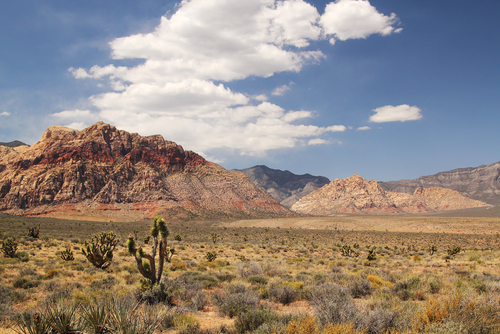
The ancestors of the Southern Paiute were adapted to life in the arid Mojave Desert. In particular, archaeologists believe they had a specialized toolkit that allowed them to exploit the small grasses that grow in the desert region.
Source - shutterstock.com; image id: 371221735
Click on next page to continue.
Early History
Although located far from the early Spanish settlements, the Southern Paiute were nonetheless deeply impacted by Spanish colonization of the Southwest. By the early 1700s their children were regularly being stolen by Navajo, Ute and New Mexican slave traders to be sold as laborers to the Spanish. To avoid being captured, the Paiute increasingly limited their foraging to marginal areas where raiders were less likely to stray. The inability to move freely across the landscape in pursuit of water and food resources reduced a once healthy people to regular malnourishment.
It was in the mid-1800s, however, that their lives were to become drastically and irrevocably altered. Before then encounters between the Southern Paiute and Anglo Americans had been mostly sporadic. But in the mid-19th century the Mormons, led by Brigham Young, begin to establish settlements in Southern Paiute territory. Mormon forts and villages were constructed adjacent to springs and wherever the best farmland could be found—the same areas that had been important resource locations for the Southern Paiute. Furthermore, the livestock that the Mormons brought denuded the landscape of the grasses that the Paiute had depended on for food. Less than twenty-five years after the arrival of the Mormons, the population of some bands had declined by as much as 90%, and the Paiute had been transformed from self-sufficient farmers and foragers to destitute people forced to rely on wage labor to stay alive.
In the following sections we will examine what is known about the early lifeways of the Southern Paiute. It should be kept in mind, however, that most of what we know comes from late 19th century historic accounts. Because of their nomadic lifestyle, the Southern Paiutes left behind a limited archaeological record. And, because of the remoteness and perceived harshness of the environment in which they lived, few Europeans ventured into their territory during the early historic period. Therefore, most of what we know come from descriptions of a people whose lives had already been tremendously and negatively impacted.
|
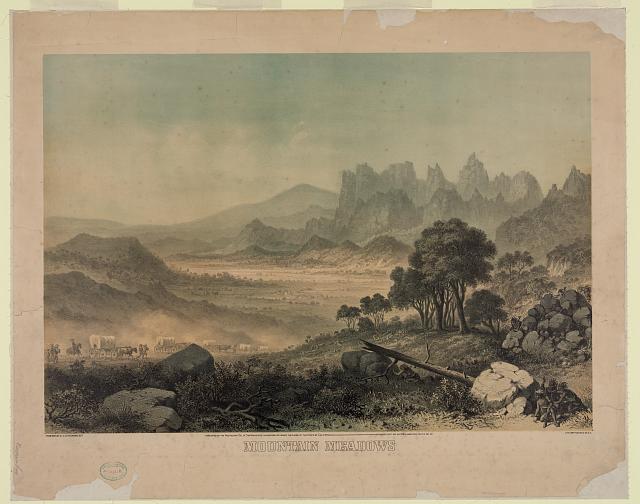
|
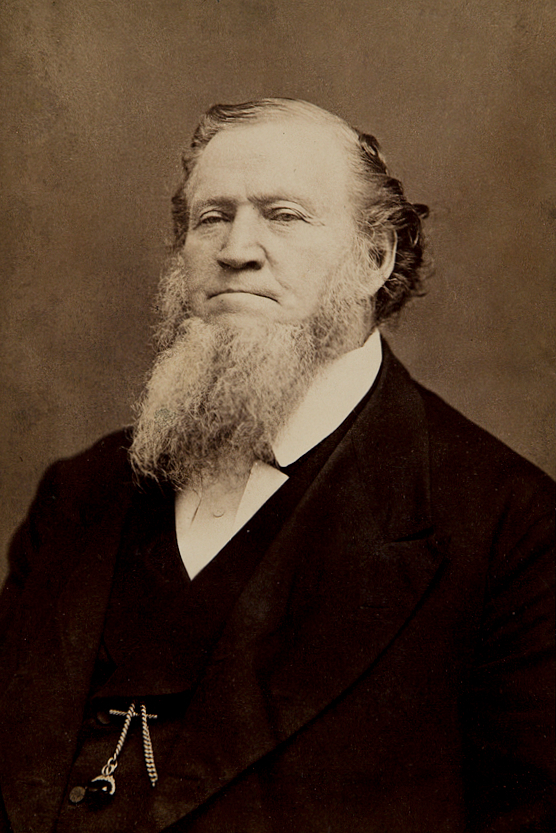
|
|
1877 painting of Mormon wagon train in Utah.
Source - http://www.loc.gov/pictures/item/95510919/
|
Brigham Young, ca. 1870
Source - https://en.wikipedia.org/wiki/Brigham_Young
|
Click on next page to continue.
Settlement and Subsistence
|
Paiute territory is characterized by great elevational and ecological diversity, but also by low precipitation and a corresponding low density and diversity in biomass. To most of us, finding food in this territory would seem nearly impossible, but the Paiute were impressive naturalists who were intimately familiar with the available resources. Early ethnographers report that the Paiute collected more than one hundred edible wild plants and left almost no animal species uneaten. The low biomass productivity of their environment required that they made use of all edible resources on the landscape and moved frequently to locate new resources.
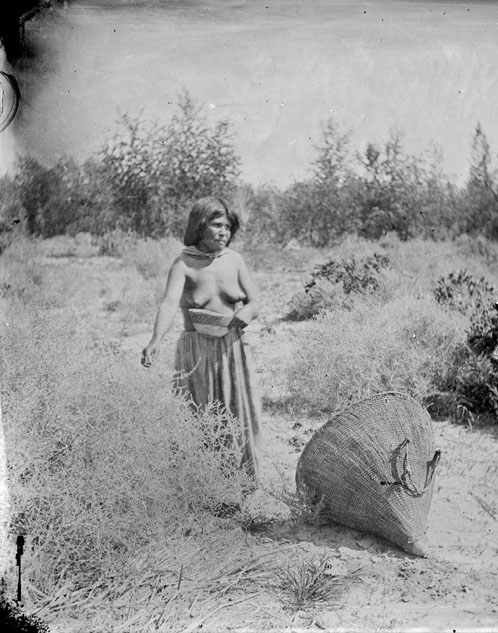
Woman gathering seeds in large basket, 1873
Source - http://sirismm.si.edu/naa/baegn/gn_01641.jpg
|
Prior to the Anglo encroachment on their territories the Southern Paiute were foragers, though some groups also practiced some casual farming. Although the seasonal subsistence cycle varied depending on what part of the territory a group occupied, a typical Paiute year might involve foraging for grass seeds and collecting tortoises and lizards during the summer. Those groups near permanent watercourses might also plant crops but they rarely stayed to tend them. During the fall, they might move to a higher elevation area to collect yucca fruits and pinyon nuts or to foothill locations to collect mesquite pods. Fall was the most plentiful time of the year, and all groups stored as much food as possible during this time to safeguard against winter and spring shortages. Winter would be spent in the foothills, canyons or mountains hunting rabbit and large game and subsisting off stored foods. Spring was generally the most difficult time of the year since food stores would be running low and edible plants were not yet available. When food caches were exhausted, the Paiute would turn to foods they ordinarily considered unpalatable such as catepillars, locusts, rattlesnakes, and juniper berries. Because of the scarcity of water in the area, springs were important resources and ones that were privately owned and inherited through the male line. During the summer, when washes fed by snow melt had dried up, families camped near these springs.
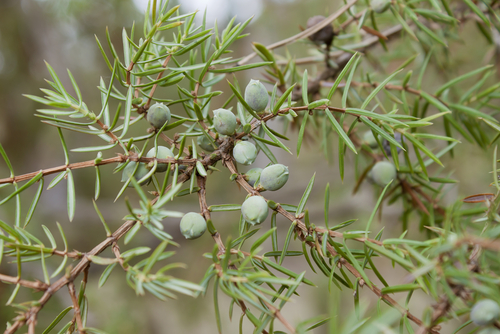
Juniper berries, though not favored, would be eaten in times of famine
Source - http://www.shutterstock.com/pic.mhtml?id=76846132&src=id
|
Click on next page to continue.
Material Culture
|
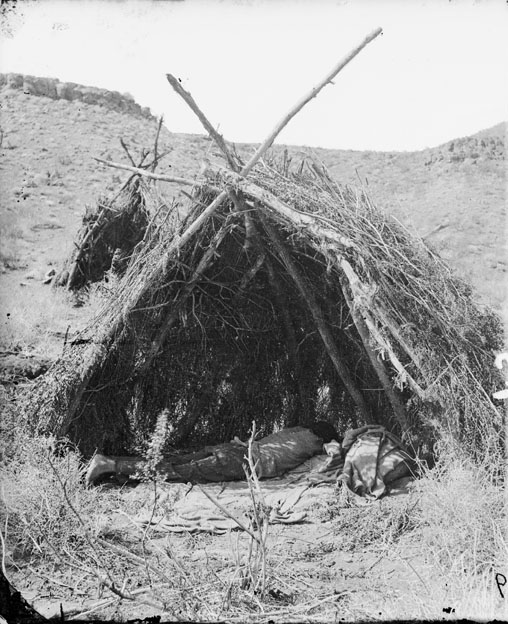
|
The mobile lifestyle of the Paiute is reflected in their material culture. Basketry was emphasized over pottery, although ceramics were used by some groups. Their structures reflected low labor investment, with the winter homes of most Paiute being conical, brush covered structures and summer homes being little more than windbreaks or sunshades. However, the Chemehuevi—who adopted the farming lifestyle of the Colorado River tribes-- constructed earth-covered dwellings similar to those made by the Mohave, and some groups on the northwestern periphery of the Southern Paiute territory adopted the tipi from the Utes.
|
|
Paiute summer shelters, 1873
Source - http://sirismm.si.edu/naa/baegn/gn_01635.jpg
|
|
Paiute women were expert basket weavers. During their frequent moves, possessions were carried in large burden baskets transported on the back. Grass seeds were collected with the help of basketry seed beaters, which were used to sweep the seeds into a conical basket. Once collected the seeds would be winnowed and parched, and then ground into a flour that could be cooked into a gruel or made into a type of bread.
|
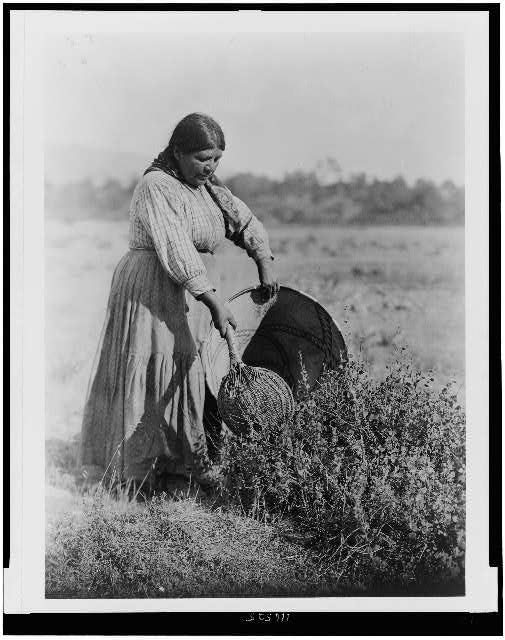
Source - http://lcweb2.loc.gov/service/pnp/cph/3c10000/3c16000/3c16500/3c16525r.jpg
|
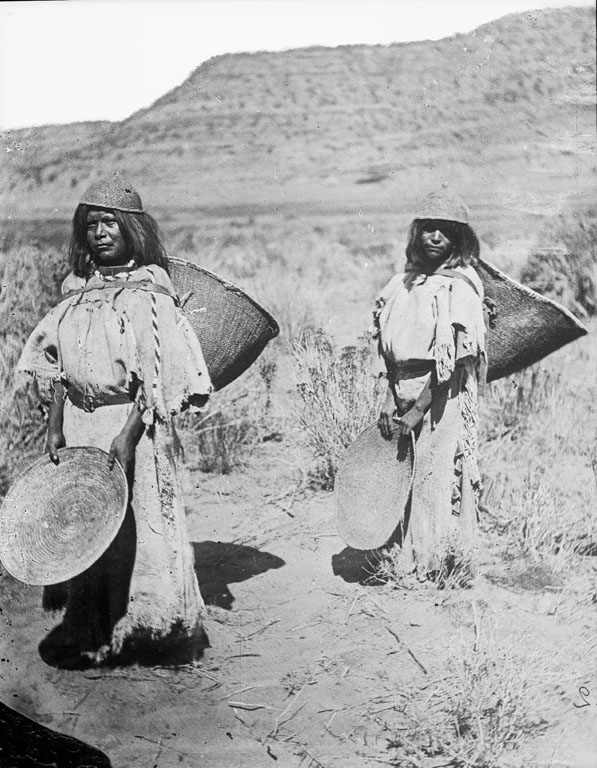
Source - http://sirismm.si.edu/naa/baegn/gn_01607no2.jpg
|
|
Woman using a seedbeater to collect grass seeds in a conical basket
|
Paiute woman carrying burden baskets on their back. (Also note the woven basketry hats they wear, a typical Paiute feature)
|
Click on next page to continue.
Worldview
Integral to the world view of the Paiute was the concept of puha, or power. Puha could reside in any animate or inanimate object, and could be accessed by shamans or singers to bring about good. Shamans healed individuals who were ill or who were being plagued by ghosts. Singers—who, like the Mohave were given their songs during dream experiences—would sing songs to ensure a good hunt, to help the dead find their way to the afterworld, or simply to ensure the well being of an individual.
Not all powers were benevolent, however. Some spirits, such as water babies, were considered dangerous. Water babies are small supernatural beings that live in lakes, springs and rivers and that look for opportunities to drag people into the water to drown them. Water babies are believed to look somewhat like babies except that they have wings.
Paiute ceremonies included the social Round Dance, in which men and women linked arms and moved clockwise in a circle. In the 1890s, the Round Dance became a part of the religious Ghost Dance movement that originated with the Northern Paiute and soon swept through other tribes. This movement was initiated by a Paiute prophet named Wovoka, who prophesied that if Indians would live correctly and perform the Round Dance then their deceased ancestors would be resurrected, the white man would be vanquished from the continent, and the native landscape restored to its former condition. This message was readily accepted by the Southern Paiute, who by that time had been devastated by the impacts of Anglo colonization.
|
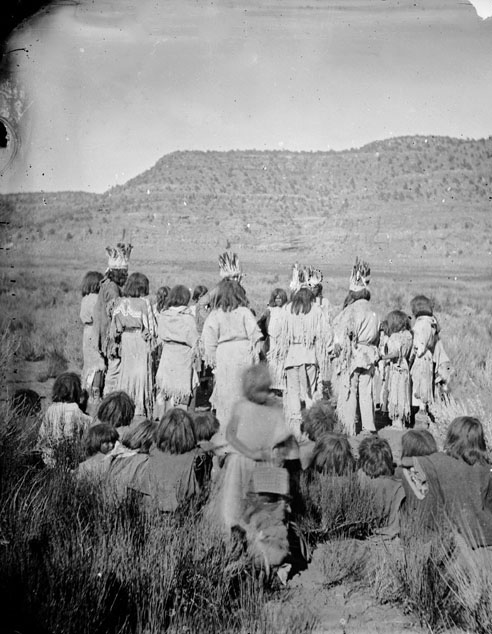
Paiute conducting a Round Dance, 1873.
Source - http://sirismm.si.edu/naa/baegn/gn_01622.jpg
|
In the mid to late 1800s the Southern Paiute adopted the mourning ceremony from the River Yumans. This ceremony, called the Cry Ceremony, was held within three months after someone had died. The ceremony would last five days and nights, during which times songs would be sung to honor the dead and to help them find their way to the afterlife. On the last day, valuables were burned in honor of the deceased. Because of the expense associated with hosting a Cry Ceremony, several families who had lost relatives might co-host a ceremony.
Finally, some Paiute adopted the Ute Bear Dance in the late 1800s from Plains Indian tribes. This ceremony is conducted in the spring when bears are waking up from their hibernation. The dance is conducted to pacify the bears and to give participants the power to escape from the bears. Its purpose was secular rather than religious, providing people with the opportunity to mingle with those of adjacent areas.
|

Source - http://en.wikipedia.org/wiki/File:Wovoka_Paiute_Shaman.jpg
|
Wavoka, Paiute prophet who founded the Ghost Dance movement. Wovoka believed that if the Native Americans would perform the traditional round dances, their ancestors would drive the white colonists out of North America and restore peace and prosperity to the people.
|
Click on next page to continue.
Social and Political Organization
The basic economic unit of the Southern Paiute was the family. It was this unit that moved together, foraged together, and shared access to springs and hunting territories. The Southern Paiute did recognize the existence of "bands" which lay claim to certain territories, but these were not true bands because their members did not cooperate economically. The Southern Paiute had no overall tribal organization.
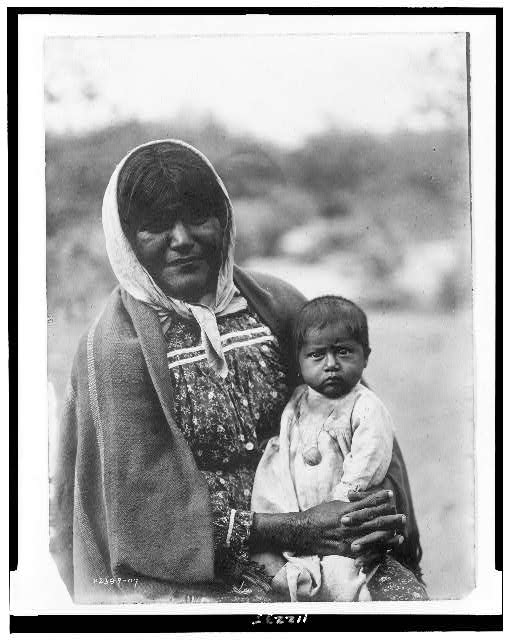
Paiute (Chemehuevi) woman and child, ca. 1907
Source - http://www.loc.gov/pictures/item/94514446/
Click on next page to continue.
Later History
Relations between the Mormons and the Paiutes were equivocal. Lacking access to the lands capable of supporting their foraging lifestyle, the Paiute became dependent on the Mormons for wage jobs. With the abolishment of slavery by the Mormons they no longer had to worry about their children being stolen, but they did continue to lose them to Anglo servitude. The Mormons, who called the practice "purchasing [the Indians] into freedom," used indentured servitude to secure the rights to Paiute children. These children would be required to live with and work for a Mormon family for periods of up to 20 years. The Mormons were encouraged in this practice by church leadership who believed that it provided Paiute children with the opportunity to be educated and converted. Facing a choice of watching their children starve or be sold into servitude, many Paiute families chose the latter. The Mormons felt a particular obligation to convert the Indians because they believed they were the Lamanite tribe of Israel described in the Book of Mormon.
|
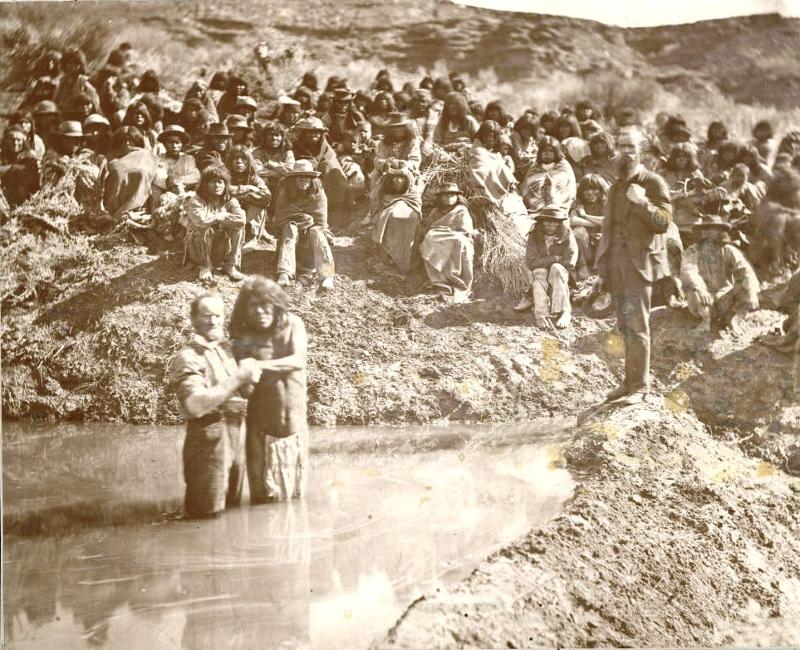
Source - https://upload.wikimedia.org/wikipedia/commons/a/a6/Baptism_of_Shivwits_Indians.jpg
|
Mormon missionaries baptizing Paiute Indians in the Virgin River, 1875. Early Mormons believed that Native Americans were descendants of a lost tribe of Israel, and therefore believed they had a special duty both to treat them fairly (Brigham Young outlawed the owning of Native American slaves) and to convert them.
|
One of the most controversial events in Mormon and Paiute history is the 1857 Mountain Meadows Massacre.This event occurred when a wagon train of emigrants making its way from Arkansas to California was attacked, ostensibly by Paiute Indians. After being held under siege for several days the emigrants were told by local settler John D. Lee that if they handed over their arms he would escort them to safety. They did so, but after following Lee out of the meadow all of the emigrants except for the youngest children were executed. Responsibility for the attack was initially pinned on the Paiute, but eventually several Mormon men (including John D. Lee, who confessed) were found to have been involved. Still unresolved today is whether any Paiute were involved at all and the degree to which the action might have been sanctioned by any of the Mormon authorities.
If the video is not working, click on the link - http://www.youtube.com/watch?v=U8kcqpTkj6k
|
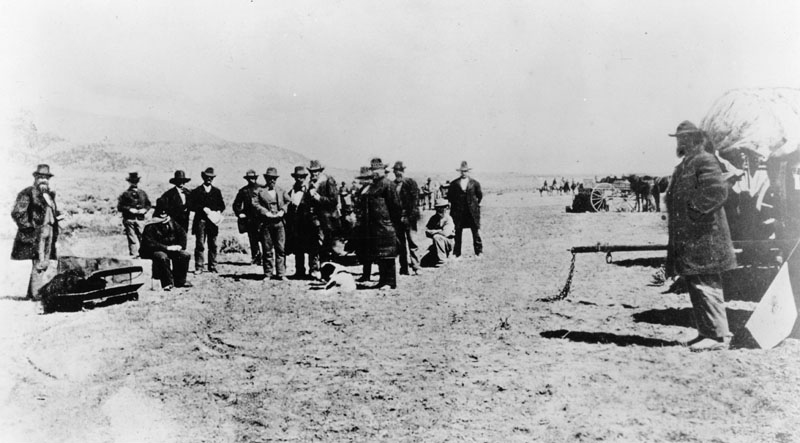
Source - https://commons.wikimedia.org/wiki/File:John_D._Lee_pre-execution_photo.png
|
John D. Lee (seated next to the coffin), shortly before his execution at the site of the Mountain Meadows massacre in 1877. Although he confessed to the crime, Lee claimed that he had been acting on instructions from Mormon authorities, who encouraged the attackers to dress as Paiutes so that the Paiutes would be blamed. "I have been sacrificed in a cowardly, dastardly manner," were his last words.
|
By the 1860s, the Paiute had been reduced to poverty. Some Paiutes, especially those who had horses, responded to their impoverishment by raiding settlements and wagon trains. As troubles with the Paiute escalated, the federal government responded by creating reservations where the Paiute could be confined. In 1872, the first Paiute reservation was established near Moapa. Other reservations soon followed, though most were too small to support the Paiute population. As a result, most of the Paiute left the reservations to in search of jobs.
In 1954, five Utah Southern Paiute tribes were terminated under a newly established policy that would end the trust relationship between the federal government and Indian tribes (see Module 2). Under this policy, tribes were to lose their lands, governmental services, and federal recognition as tribes. In theory, termination was to be restricted to those tribes that were "ready" for it; that is, those tribes whose members were sufficiently enculturated to leave reservation life and who lived in areas having sufficient wage opportunities to allow them to do so. Studies were done, and the Utah Paiute were deemed not ready for this transition. Nonetheless, for political reasons they were terminated anyhow. The consequences were drastic and ushered in a 25-year period of poverty and hopelessness for the Utah Paiute. After a long struggle, they had their federal recognition status restored in 1980 and united to form the Paiute Indian Tribe of Utah. Since that time, the tribe has fought successfully to reverse the economic free fall that its members experienced during the years of termination; its successes include a dramatic decrease (from 40% to 3%) in the high school dropout rate, the improved health and longevity of its people, and a growing sense of pride in their heritage.
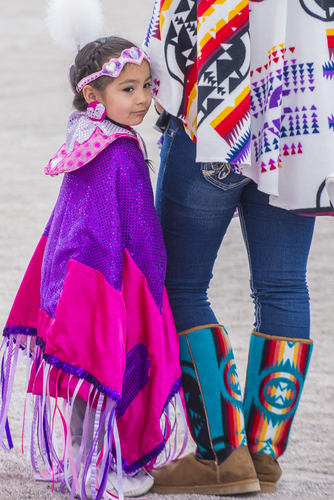 Today, there are five federally recognized Southern Paiute tribes and two major Southern Paiute Reservations (the Moapa River Paiute Reservation and the Kaibab Paiute Reservation). Other smaller reservations and landholdings are found near Las Vegas, in southern Utah, and within the boundaries of the Navajo reservation. Because of the small size of these reservations, most Southern Paiute live off the reservation, but they retain a strong sense of identity with their Paiute heritage.
Today, there are five federally recognized Southern Paiute tribes and two major Southern Paiute Reservations (the Moapa River Paiute Reservation and the Kaibab Paiute Reservation). Other smaller reservations and landholdings are found near Las Vegas, in southern Utah, and within the boundaries of the Navajo reservation. Because of the small size of these reservations, most Southern Paiute live off the reservation, but they retain a strong sense of identity with their Paiute heritage.
Native American girl at the Annual Paiute Tribe Pow Wow held in Las Vegas, 2015.
Source - Shutterstock - Image ID:293320412
Practice Quiz # 12
 The Paiute origin story features Coyote, a common trickster character in Native American legends. Coyote takes many roles in these stories, but is typically an impulsive and boastful character that often causes things to go awry. His role in the Paiute origin story is no different.
The Paiute origin story features Coyote, a common trickster character in Native American legends. Coyote takes many roles in these stories, but is typically an impulsive and boastful character that often causes things to go awry. His role in the Paiute origin story is no different.












 Today, there are five federally recognized Southern Paiute tribes and two major Southern Paiute Reservations (the Moapa River Paiute Reservation and the Kaibab Paiute Reservation). Other smaller reservations and landholdings are found near Las Vegas, in southern Utah, and within the boundaries of the Navajo reservation. Because of the small size of these reservations, most Southern Paiute live off the reservation, but they retain a strong sense of identity with their Paiute heritage.
Today, there are five federally recognized Southern Paiute tribes and two major Southern Paiute Reservations (the Moapa River Paiute Reservation and the Kaibab Paiute Reservation). Other smaller reservations and landholdings are found near Las Vegas, in southern Utah, and within the boundaries of the Navajo reservation. Because of the small size of these reservations, most Southern Paiute live off the reservation, but they retain a strong sense of identity with their Paiute heritage.